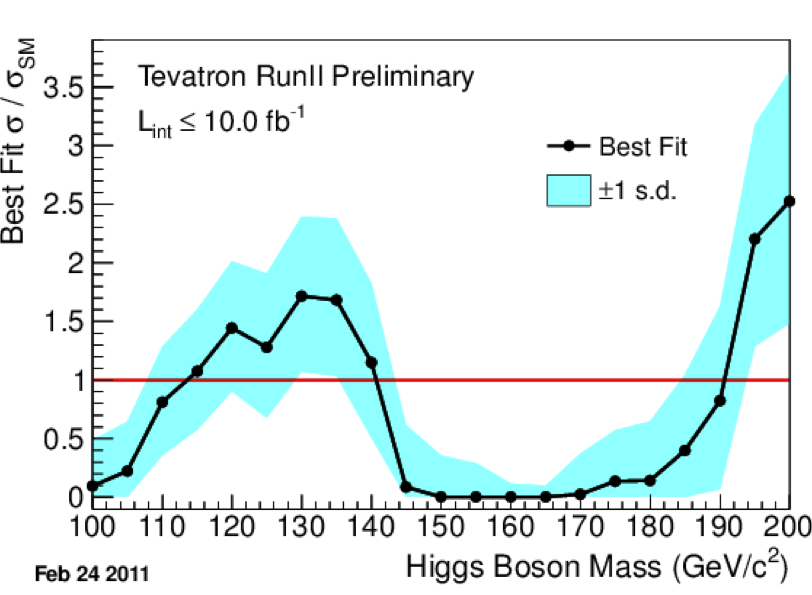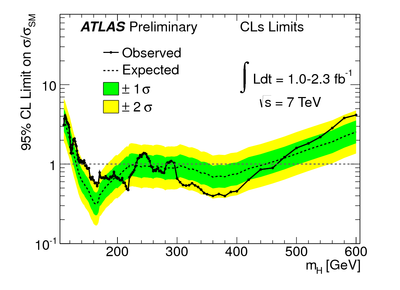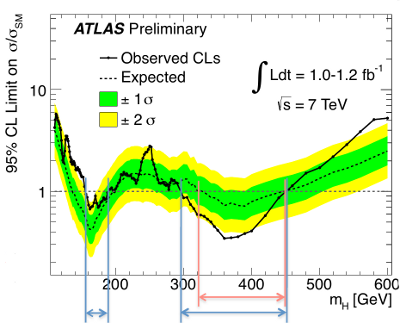Higgs rumors: hold on for another couple weeks
Posted by David Zaslavsky onFinally, a post I can make in just a few minutes! The blogs of the physics world are abuzz with a rumor that the LHC experiments have… well, what have they (supposedly) found? If you read some of the more sensationalist physics websites out there, or the popular media (the news has even made it to the New York Times, although to their credit they’re being pretty reserved about it), you might get the idea that scientists at CMS and ATLAS have found the Higgs boson already and are just keeping the news officially under wraps until they can present it with much fanfare at a conference next month. That is not true.
It’s important to remember that finding the Higgs boson is not like finding a lost key or something: you can’t just look at it and say “yep, there’s a Higgs boson,” even if you do have what is essentially a giant microscope. Instead, it’s a probability thing. You analyze the results of the experiment and get out a result like “90% chance that the Higgs boson exists” or “95% chance that the Higgs boson does not exist” (actually even there I’m …



